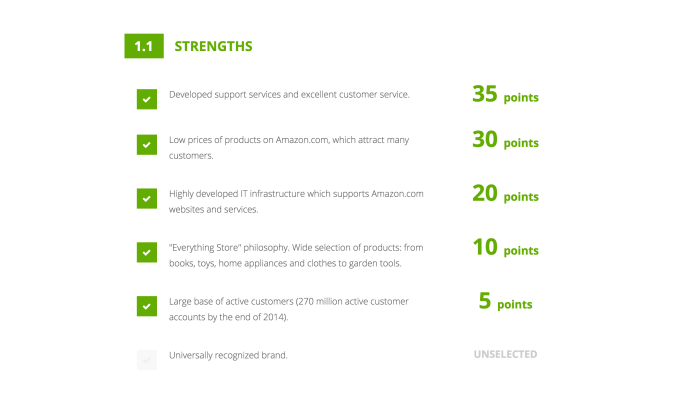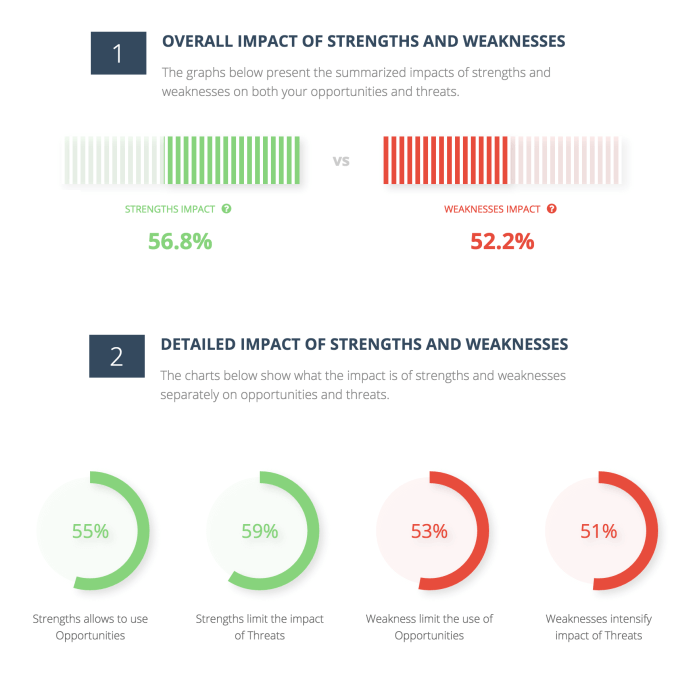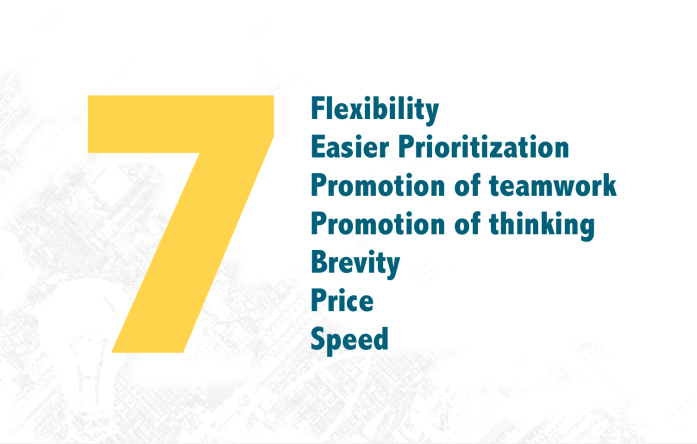Did you know that SWOT analysis is more than fifty years old? New methods come and go, but hundreds of thousands of businesses around the world still trust SWOT. Why is it that the framework developed in the 60′ still stands bravely, invariably finding new supporters in such a volatile business world, where the landscape is constantly changing?
There are of course many reasons — some of them more abstract, and some more specific to certain types of ventures. Here you can find our Golden Seven — an opinionated list of the SWOT features, which make it so useful for every business.
1. Flexibility
One of the reasons for the wide adoption of SWOT analysis is its flexibility. SWOT focuses on simplicity, which makes it universal and easily adaptable to various applications. It can be used to assess the current state of a company, or to validate a new business or product idea. But there are also other use-cases: the improvement of the efficiency of a team or finding the right career path. SWOT can be used on a strategic level, but also in the context of smaller departments — it all depends on the current needs of the organization.
2. Easier Prioritization
Even though the primary form of SWOT analysis does not include prioritization, in the extended analysis (described here) prioritization is essential. It allows people to compare different features and eventually pick out the most important ones.
What is important is that the priorities are not only based on gut feelings but are derived from the existing relationships between given features. Extended SWOT helps to create lists of strengths and weaknesses with the biggest impact on opportunities and threats, or to define which types of features have the highest level of interaction. With this kind of data at hand, the company can decide more easily which direction it should take.

3. Promotion of teamwork
A single person can do the analysis quite easily, but the best results are accomplished when many people work on the same analysis simultaneously. Employees from the marketing department can have a different view of the company than core business people or technical leaders. Because the SWOT is so easy to comprehend, the learning curve is mild. It allows people with different backgrounds to exchange ideas freely and promotes healthy discussion, helping to have all people on the same page, regardless of their position in the company.
4. Promotion of thinking
I have seen it many times. When people start doing their SWOT analyses, they start to think about things that they never thought about before. The idea of listing features, evaluating the most important ones and identifying connections ignites the fire of creativity. People begin doing market research, look closer at their current competitors or notice annoying liabilities within their companies which were unnoticed at first. The analysis allows people to understand their businesses better — both in terms of the internal (“here and now”) and external environment (“there and then”).
5. Brevity
Have you ever had that feeling that you read the same page over and over again because you were not able to focus? Many strategic reports neglect the reader’s ability to focus and concentrate on details instead.
They have hundreds of pages of written text, and therefore make finding the essence quite challenging. SWOT analysis is different — it is usually a few pages long (the basic version can fit on a single sheet of paper), and it visually emphasizes the most important factors. Regardless, whether you decide to do the basic version or spend more time on the extended one, it is certainly easier to share the results of the SWOT than to collaborate on a document which has a few hundred pages.

6. Price
Price should not be underestimated. Most of the time SWOT is simply a cheaper option. Generally, comprehensive reports are quite expensive. Very often, they involve advisors with strategic planning backgrounds or even entire departments from consulting companies. SWOT analysis, on the other hand, has little or even no cost; does not need technical skills, can be done easily with pen and paper or readily available tools and, surprisingly, often gives better results.
7. Speed
When you have to make a quick strategic decision, the last thing you want to hear is that you have to wait one month or so for ‘the strategic report’ to be finished. On average, a good SWOT analysis can be done in less than an hour. Very often this is sufficient to set up your priorities and make the first call. Fast decisions are particularly important in businesses which operate in highly variable markets, where each second counts. A short time of execution can also mean more iterative work. The traditional strategic reports are by definition finished, but the SWOT analysis is by definition unfinished meaning that it can be re-done many times, adjusted and improved over time.
Summary
SWOT analysis is one of the most prominent tools in the toolbox of every entrepreneur. No surprise, since there are so many compelling reasons to use it. Let’s review them once again: Flexibility, Easier Prioritization, Promotion of teamwork, Promotion of thinking, Brevity, Price and Speed.

The list is, of course, open, and more and more businesses find their way to take advantage of SWOT. Do you have your own reason, which we missed? Leave a comment below!
And last but not least, do not forget to visit our website: www.cayenneapps.com and take your SWOT analyses to the next level.
its now SLOT….inlieu of SWOT…….its limitations which is blocking people from performing and not weakness. ….limitations is more positive approach. ..
Thanks Ram! I would say: Whatever Works 🙂
If the team becomes more creative by using Limitations instead of Weaknesses, I would definitely be eager to try it!
[…] read more at blog.cayenneapps.com […]